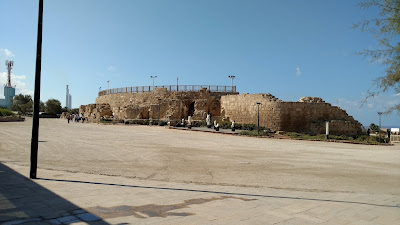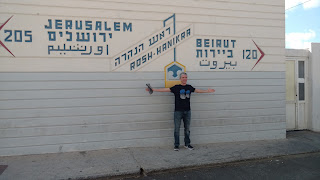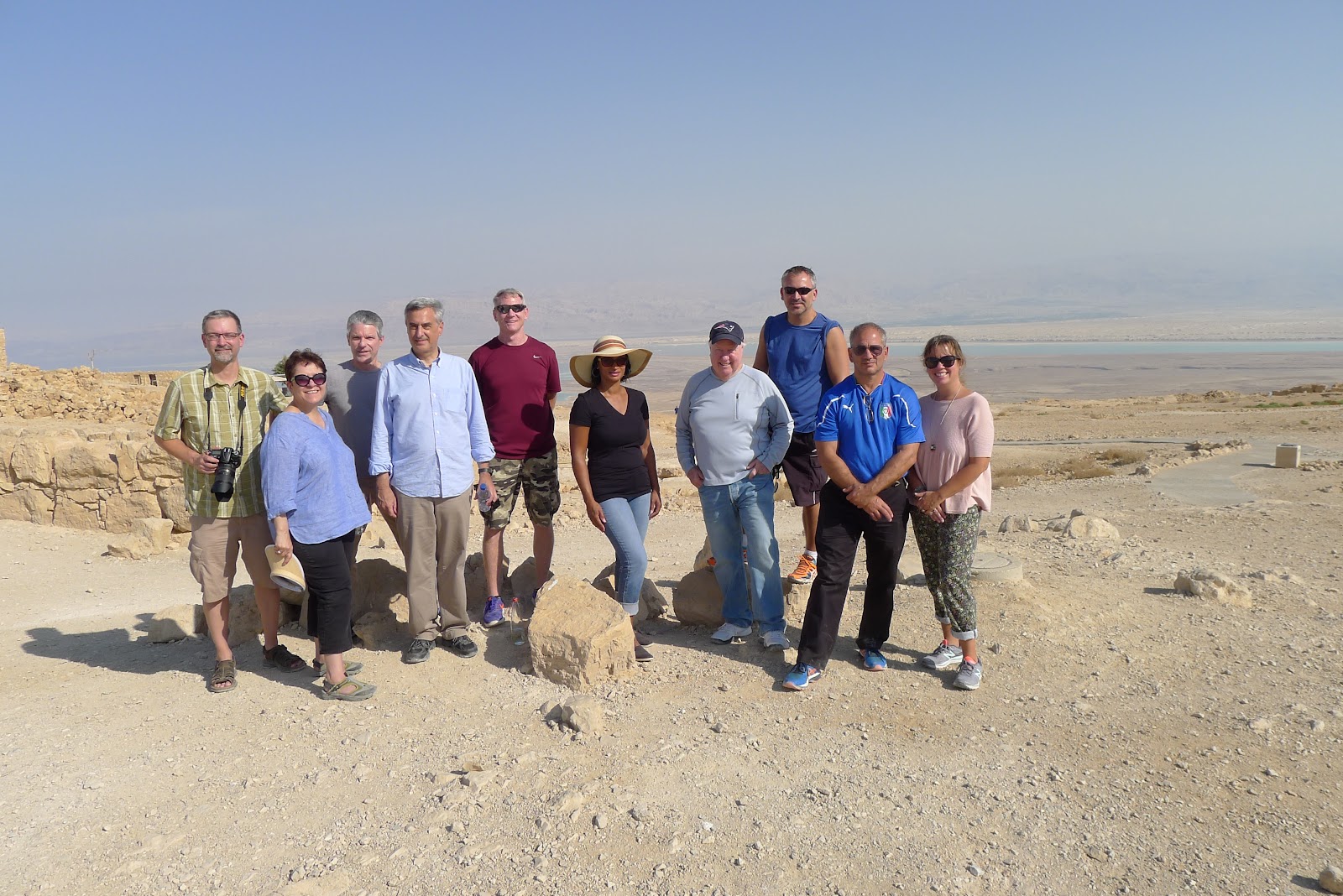Highlights:
- OIG Inspection of Embassy Tegucigalpa, Honduras in February(See Separate Blog)
- Visits to Valle de Angeles, Santa Lucia and the former capital Comayagua


- OIG Inspection of Embassy Belmopan, Belize in March (See Separate Blog)
- Road trip to Tikal, Guatemala Ancient Mayan ruins
The Great Plaza and North Acropolis
- Charleston Jazz Orchestra performed the music of Stevie Wonder in March
- In April I volunteered at the Volvo Car Open Tennis Tournament doing court maintenance. This was probably the 10th year I had volunteered starting back in 2004 as an usher and in subsequent years as a driver before settling on court maintenance dragging the court or brushing the lines. Sloan Stephens defeated Elena Vesnina 7-6, 6-2.
- OIG Inspection of Embassy Islamabad, and Consulate Karachi, Pakistan in May/June (See separate blog)
Embassy My Quarters Containerized
- May: Spoleto Music Festival and Chamber Music at the Dock Street Theater with Geoff Nuttall (1965-2022)
- Freddie Cole Quartet at the Music Hall in June
- In August we attended a "Hard Hat" Tuning Concert at the new Gaillard Concert Hall
- August Summer Soiree at Pierce Pavilion on DI
- Low Country Jazz Festival in September saw Brian Culbertson
- Also took a quick trip out to San Francisco in September to attend Chris and Debbie's Bay Area farewell. Boat ride on the bay and great feast at Scoma's on the wharf. Mix of cousins, co-workers and friends.

- OIG Inspection of Embassy Tel Aviv and ConGen Jerusalem October/November (See separate Blog)
- Discovering Tel Aviv: Holocaust Museum, Goocha Restaurant; Biking the Boardwalk, Jaffa
- Discovering Jerusalem: Old City, Tower of David, Ancient Tunnels under Old City, Friends of Zion Museum
- Weekend trips to Caesarea, Akko, Rosh Hanikra, Nazareth, Capernaum, See of Galilee, Judea, Ein Gedi nature reserve, Dead Sea, Masada, Herodion and West Bank settlements.
- Picking olives on the Mount of Olives.
- October 8 Hurricane Matthew hits Charleston. Although it was just a category 1 hurricane, extensive damage was done due to flodding, landslides and destruction to trees. Doris didn't evacuate and stayed with neighbors but we lost three Leyland Cypress trees in our backyard.
- The Annual Turkey Day run in November with David and Bob & GLO.
- December 1 Charleston Symphony performing Handel's Messiah at the Cathedral
- December 3 Reindeer Run downtown
U.S. Events
· Donald Trump is elected as US President;
· Amazon Prime Video launches worldwide;
· Scientists invent the Crispr-Cas9, a unique technology that enables medical researchers to edit and delete DNA, thereby allowing effective genetic engineering;
· Florida nightclub shooting: Omar Mateen kills 49 people and wounds 53 at a gay nightclub in Orlando;
· Scien
- Charleston Jazz Orchestra performed the music of Stevie Wonder in March
- Volvo Car Open in April won by Sloan Stephens
- May: Spoleto Music Festival and Chamber Music at the Dock Street Theater with Geoff Nuttall (1965-2022)
- Freddie Cole Quartet at the Music Hall in June
- In August we attended a "Hard Hat" Tuning Concert at the new Gaillard Concert Hall
- August Summer Soiree at Pierce Pavilion on DI
- Low Country Jazz Festival in September saw Brian Culbertson
- Also took a quick trip out to San Francisco in September to attend Chris and Debbie's Bay Area farewell. Boat ride on the bay and great feast at Scoma's on the wharf. Mix of cousins, co-workers and friends.
- Annual Turkey Day run in November with David and Bob&GLO
- December 1 Charleston Symphony performing Handel's Messiah at the Cathedral
- December 3 Reindeer Run downtown
- WACC meeting with Ambassador Jerry Lanier speaking on the topic of Challenges for Trump
U.S. Events
· Donald Trump is elected as US President;
· Amazon Prime Video launches worldwide;
· Scientists invent the Crispr-Cas9, a unique technology that enables medical researchers to edit and delete DNA, thereby allowing effective genetic engineering;
· Florida nightclub shooting: Omar Mateen kills 49 people and wounds 53 at a gay nightclub in Orlando;
· Scientists and researchers successfully detect the first direct evidence of gravitational waves, using the Laser Interferometer Gravitational-Wave Observatory or LIGO - The existence of gravitational waves was first predicted by Albert Einstein in 1916;
· Pok tists and researchers successfully detect the first direct evidence of gravitational waves, using the Laser Interferometer Gravitational-Wave Observatory or LIGO - The existence of gravitational waves was first predicted by Albert Einstein in 1916;
· Pokemon Go, an augmented reality mobile game, got millions of people out on the street;
· American singer-songwriter and music icon Bob Dylan wins the Nobel Prize in Literature;
· Swimmer and Olympic champion Michael Phelps, holder of the maximum Olympic medals in history by an individual (23 Gold, 28 total) and 7 world records, retires.
World Events:
· Brexit Vote: Britain votes to leave the EU - The British Exit is termed Brexit;
· Demonetisation in India; India carries out surgical strikes on terror launch pads across the Line of Control in Jammu and Kashmir; Indian national Kulbhushan Jadhav abducted from Iran, held captive by Pakistan; Mukesh Ambani commercially launches Reliance Jio, makes India the cheapest market for mobile internet data in the world; Mother
· Teresa canonized posthumously as 'Saint Teresa of Calcutta' by Pope Francis at a ceremony in St Peter's Square in Vatican City;
· The historic Paris Climate Agreement in signed to take effective measures against Climate Change;
· Dhaka Cafe Attack: 5 terrorists take dozens hostage at the Holey Artisan cafe in Dhaka, kill 22 civilians, 2 cops;
· The haunting image of 5-year-old Omran Daqneesh sitting shell-shocked in the back of an ambulance in Aleppo, covered in dust with blood on his face and clothing becomes the face of the Syrian war;
Movies:
Best Picture was "Spotlight". Best actor went to Leonardo di Caprio in "Revenant". Best Actress was Brie Larson in "Room". Best supporting actor was Mark Rylance in "Bridge of Spies". Best supporting actress went to Alicia Vikander for her role in "The Danish Girl". Best director was Alejandro G. Inarritu.
Super Bowl
Super Bowl 50 saw the Denver Broncos defeat the Carolina Panthers, 24–10. The game was played on February 7, 2016, at Levi's Stadium in Santa Clara, California. As this was the 50th Super Bowl game, the league emphasized the "golden anniversary" with various gold-themed initiatives during the 2015 season, as well as suspending the tradition of naming each Super Bowl game with Roman numerals (under which the game would have been known as "Super Bowl L"), so the logo could prominently feature the Arabic numerals 5 and 0. The Broncos took an early lead in Super Bowl 50 and never trailed. Denver recorded seven sacks and forced four turnovers. Carolina likewise kept pace by recording five sacks and forcing two turnovers. Denver linebacker Von Miller was named Super Bowl MVP. This game was also the final game of Peyton Manning's career; the Broncos quarterback, who also won Super Bowl XLI, announced his retirement in March 2016.
World Series


















































